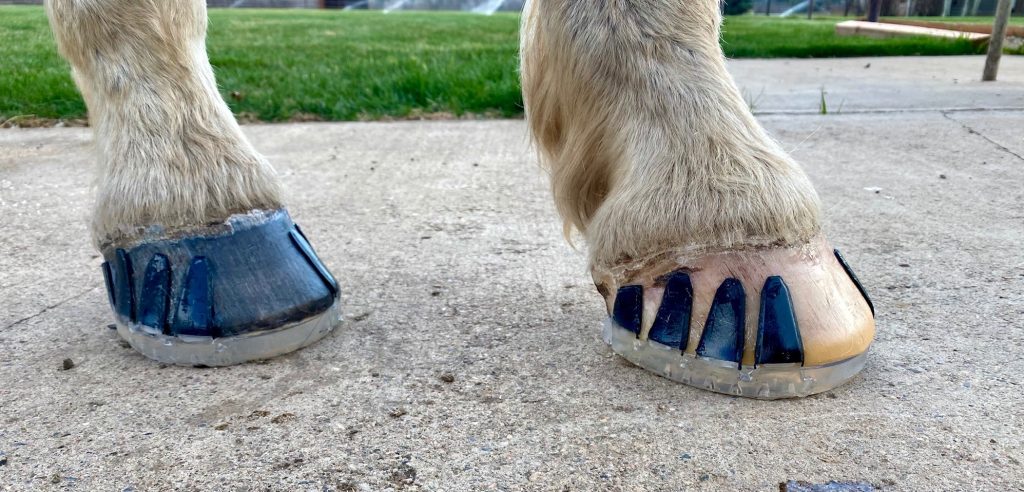Choosing the best horseshoes for your horse is a critical decision that can significantly impact their performance and well-being.
In Australia, where the equestrian community thrives, this choice becomes even more pertinent given the diverse range of terrains and competitive disciplines. Traditional horseshoes, often crafted from steel or aluminum, have been the go-to for many horse owners for centuries.
However, modern advancements have introduced glue-on horseshoes, promising various benefits that challenge conventional practices.
According to a survey conducted by Equestrian Australia, approximately 65% of horse owners still opt for traditional horseshoes, while 25% are experimenting with glue-on alternatives. This data highlights a growing interest in innovative shoeing methods within the Australian equine sector.
When it comes to selecting the best type of horseshoe for your horse, understanding the differences between traditional nailed-on horseshoes and glue-on alternatives is essential.
Both options have their benefits and drawbacks, and the choice largely depends on your horse’s specific needs, hoof health, and activity level.
Below is a comparison of 12 key factors to help you decide which is best for your horse.
- Application Method:
- Traditional Horseshoes: These are nailed into the hoof wall, requiring precise skill to avoid causing the horse pain or damage to the hoof.
- Glue-On Horseshoes: These are attached using a specialized adhesive, such as the horseshoe glue from Stockman’s Supplies, which provides a secure bond without the need for nails.
- Durability:
- Traditional Horseshoes: Known for their robustness, they can withstand rigorous activities and varying terrains.
- Glue-On Horseshoes: Equally durable when applied correctly, they can be a good alternative for horses with brittle or damaged hooves that cannot tolerate nails.
- Shock Absorption:
- Traditional Horseshoes: Metal shoes provide minimal shock absorption, which can result in more stress on the horse’s joints.
- Glue-On Horseshoes: Often made from composite materials, they offer better shock absorption, reducing joint stress and improving comfort.
- Hoof Damage:
- Traditional Horseshoes: Nailing can cause cracks or weakening in the hoof wall over time.
- Glue-On Horseshoes: Since no nails are used, there is less risk of causing structural damage to the hooves.
- Cost:
- Traditional Horseshoes: Generally more affordable upfront, but may require more frequent replacements.
- Glue-On Horseshoes: Typically more expensive initially due to the cost of adhesive like Stockman’s Supplies horseshoe glue and the materials used.
- Maintenance:
- Traditional Horseshoes: Require regular farrier visits for adjustments and replacements.
- Glue-On Horseshoes: Also need professional application, but can sometimes last longer between changes.
- Traction:
- Traditional Horseshoes: Can be fitted with studs or specialized designs for better grip.
- Glue-On Horseshoes: Offer good traction and can be customized similarly to traditional shoes.
- Weight:
- Traditional Horseshoes: Tend to be heavier, which can affect performance in some horses.
- Glue-On Horseshoes: Generally lighter, which can improve agility and reduce fatigue.
- Versatility:
- Traditional Horseshoes: Suitable for most equine activities, from trail riding to competitive sports.
- Glue-On Horseshoes: Ideal for horses with specific hoof issues or those engaged in high-impact sports due to their shock-absorbing properties.
- Hoof Growth:
- Traditional Horseshoes: May limit natural hoof expansion and growth.
- Glue-On Horseshoes: Allow for more natural hoof movement and development.
- Application Time:
- Traditional Horseshoes: Typically quicker to apply with an experienced farrier.
- Glue-On Horseshoes: May take longer to apply as the adhesive needs time to set properly.
- Horse Comfort:
- Traditional Horseshoes: Can cause discomfort if not fitted properly.
- Glue-On Horseshoes: Often more comfortable for horses with sensitive hooves, as there’s no pressure from nails.
In conclusion, both traditional and glue-on horseshoes have their own merits. For horses with healthy hooves, traditional horseshoes might be the best choice due to their cost-effectiveness and durability.
However, for horses with hoof issues or those requiring extra shock absorption and comfort, glue-on horseshoes, especially when using a high-quality adhesive could be the better option.
Always consult with your farrier or veterinarian to determine the best choice for your horse’s specific needs.


